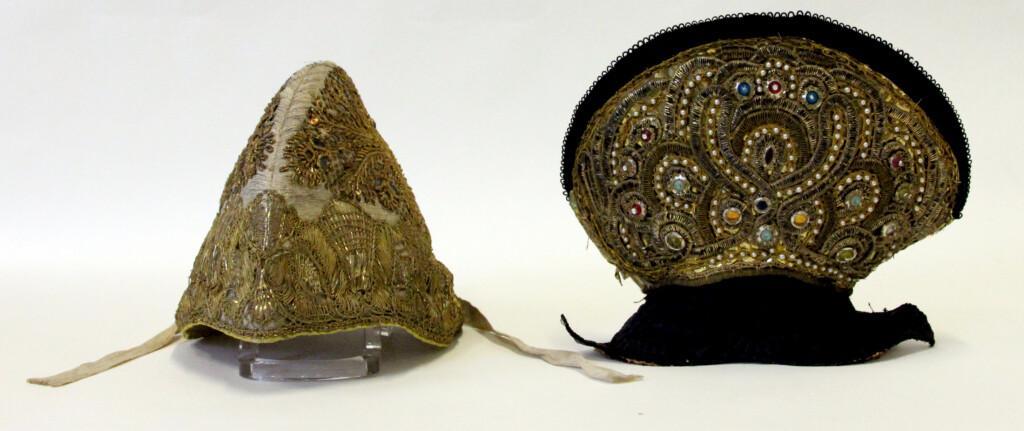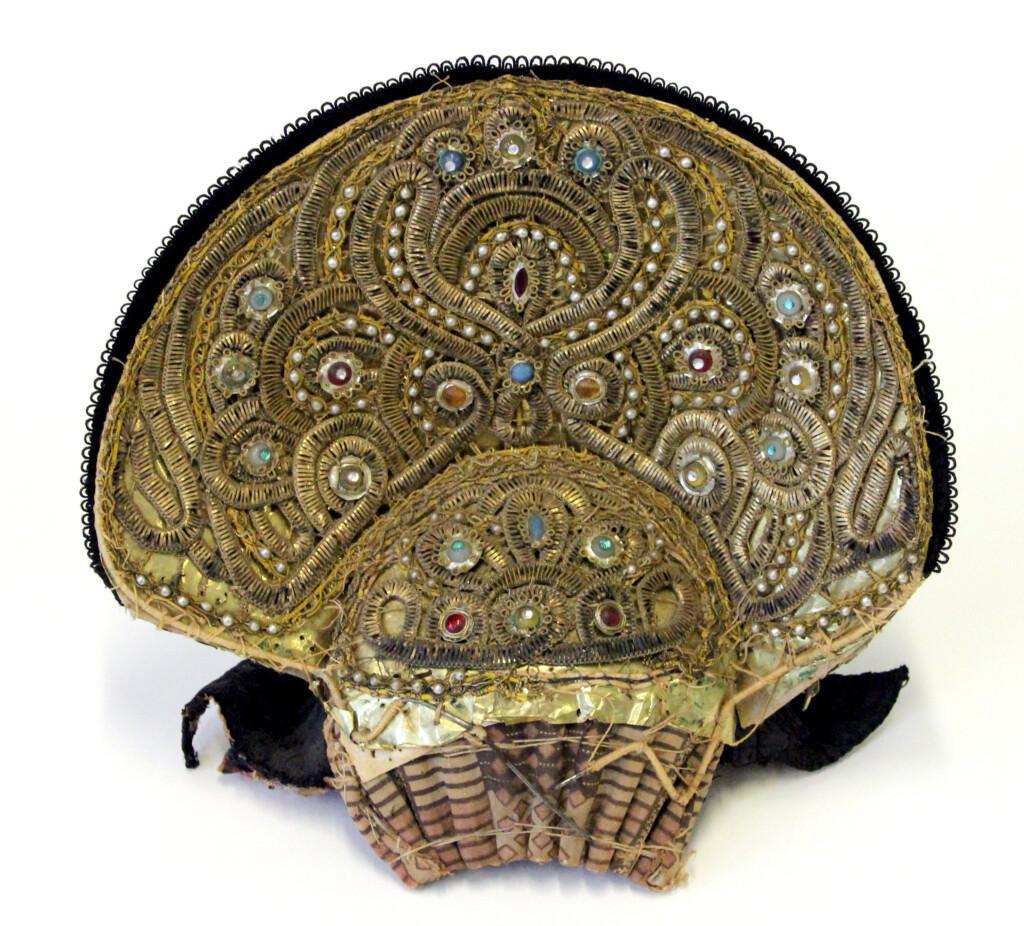TIOH Art Tour: Sterntikhl and Decorated Bibi
- Orthodox woman’s head covering
- Poland, 19th Century
- Handspun Gilded and Silver Threads
- Gift of the Briskin Family
The requirement for observant Jewish women to cover their hair has been around for many centuries. There are differing ideas however, as with most Jewish customs, as to where its origin came from.

The Mishnah, composed in the beginning of the third century, argues that the covering of the woman’s hair is not of biblical origin, nor, as some have thought, an obligation originated from Moses at Sinai. Rather it was established as a social standard of modesty defined by the customs of Jewish community. Certainly, in Sephardic communities it was a custom for all of society. Women of Christian, Muslim, and other local communities all employed covering up for modesty to some degree.

The Talmud, composed from the first through the seventh century, argued a compromised position that minimal hair covering is a biblical obligation. However, the details of when and how a woman was to cover her hair is to be determined by each community. As early as the 16th century through the mid-19th Century, married women in Eastern Europe would wear a bonnet or kupke on the back of their heads close to the scalp.
As the use of a bonnet spread over the centuries, its construction and design also evolved. Poorer women would wear bonnets made of inexpensive materials, with wealthier women donning those of brocade or velvet and adorned with gold and silver thread, pearls, and often gemstones.
Wealthy married Polish women in the late 18th and 19th centuries would wear a fancy headdress called a sterntikhl – Yiddish for “forehead kerchief”. These were worn only on special occasions, for instance when a woman would kiss the Torah on Simchat Torah. They were quite expensive, as they were decorated with precious gems and were a sign of one’s status. According to early accounts, affluent women would on occasion donate a precious stone from their sterntikhl to help a poor bride adorn her own.
The beautiful sterntikhl we see here are handspun of gilded silver thread. They are embroidered with gold thread and adorned with pearls and semiprecious stones. The workmanship and detail resemble the gowns of Polish noblewomen of the time. The front component was worn over the forehead, with the other worn on the back of the head. Long earrings were worn with these headdresses. Very few early examples of this distinctive head covering remain extant.
Home